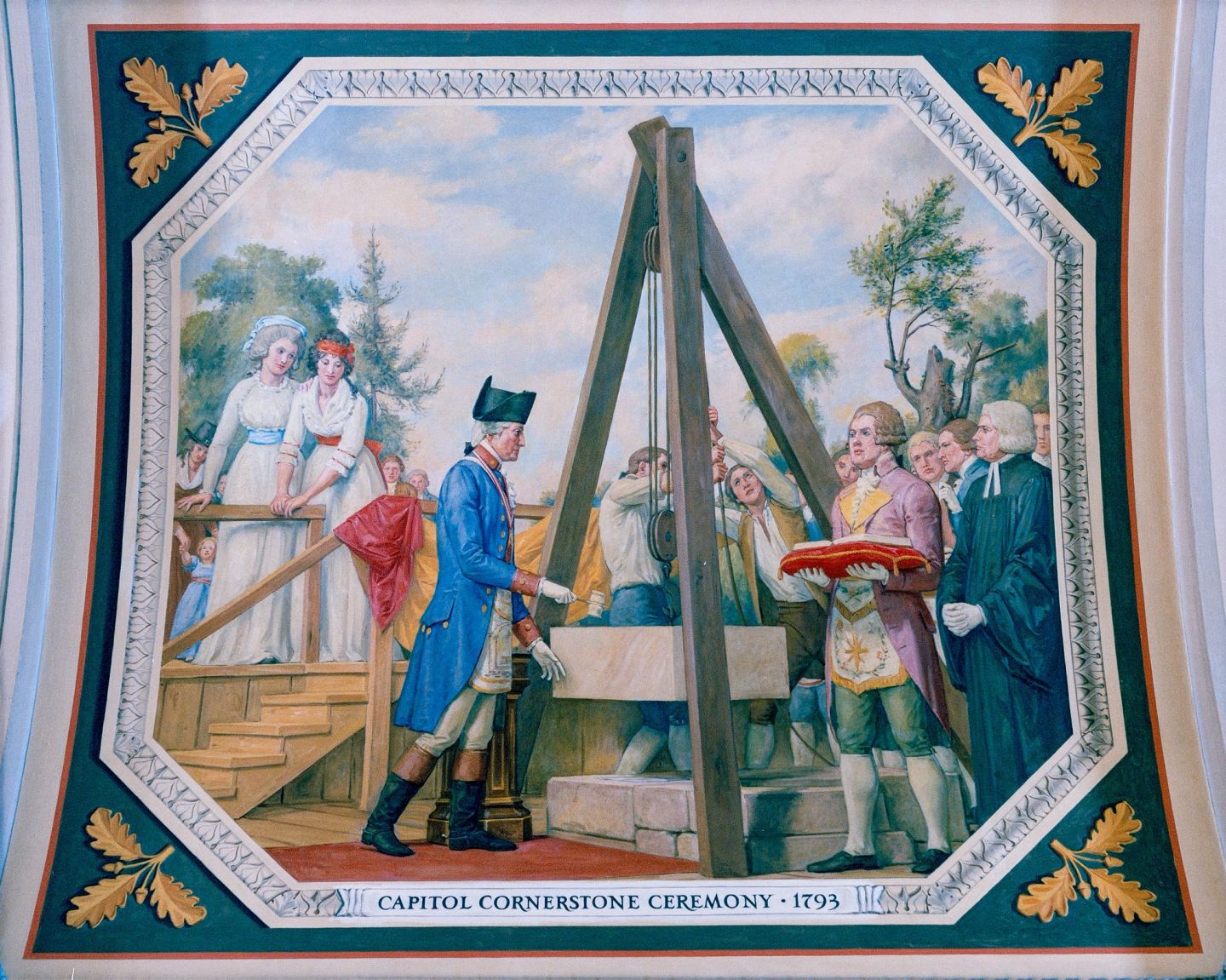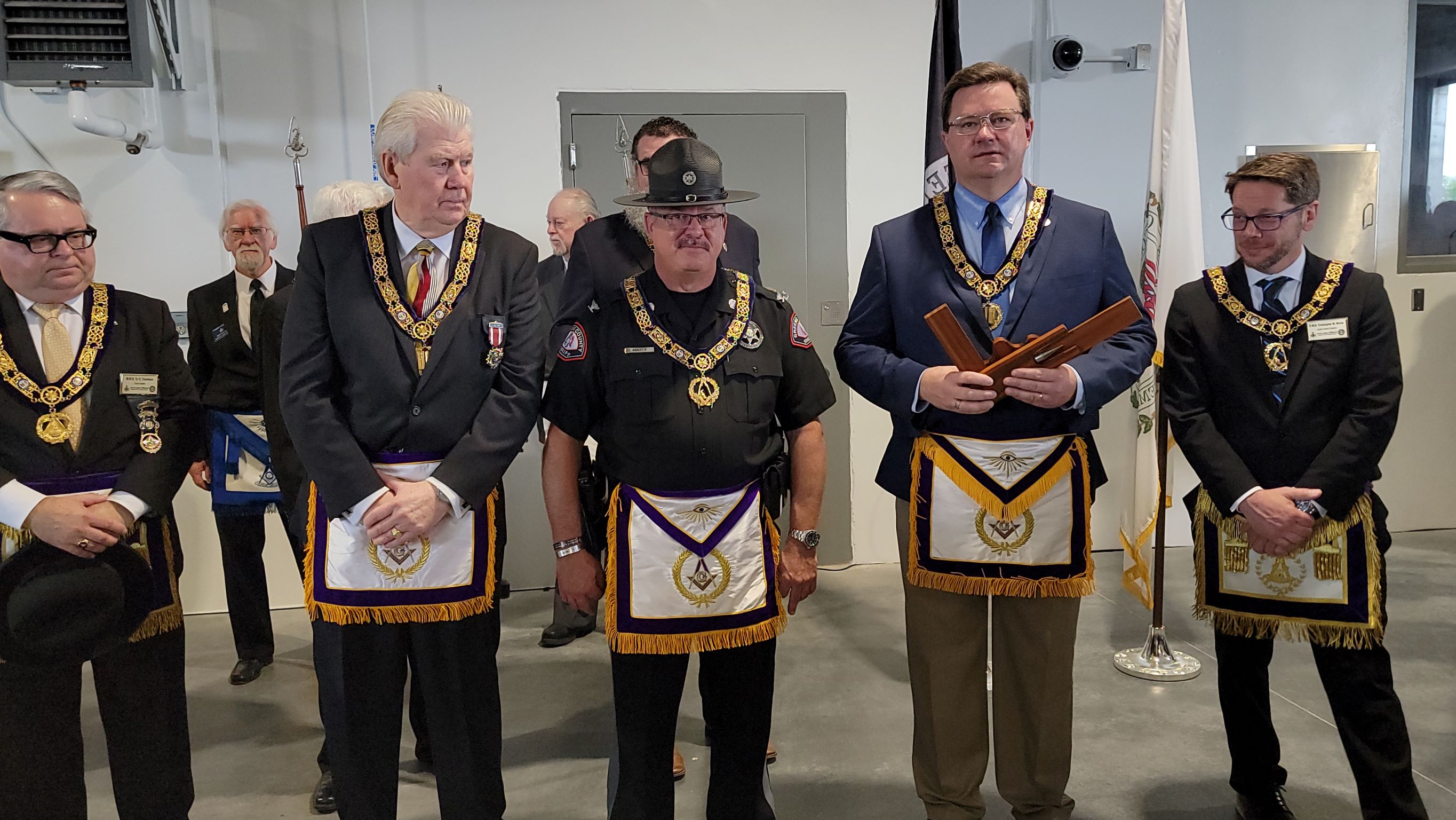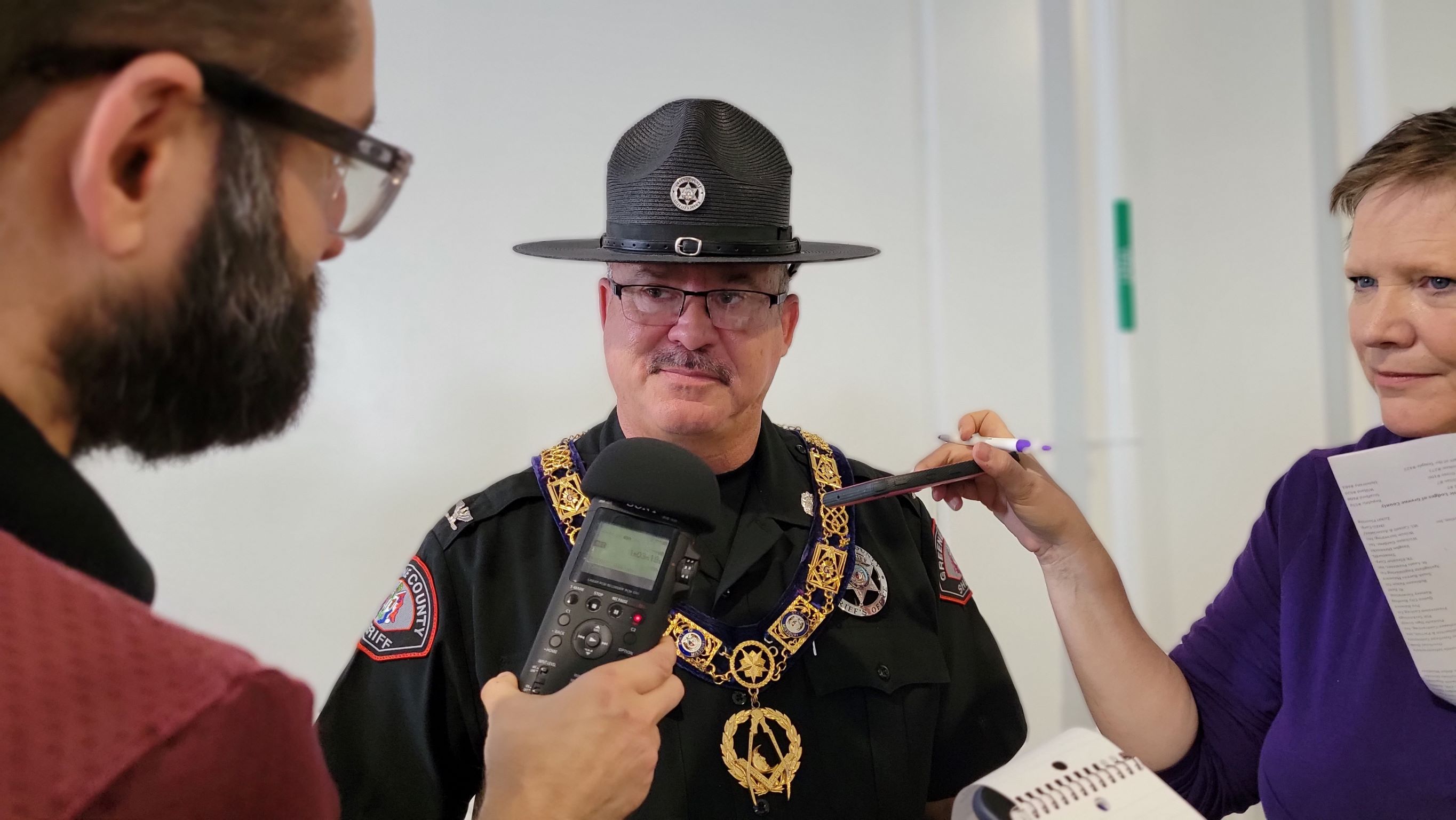OPINION |
Answer Man: What was the deal with the Masonic Rite laying the cornerstone at the May 13 dedication of the new Greene County Jail? I saw that picture of Sheriff Jim Arnott and others wearing their amulets. Is that a law enforcement kind of thing? I don’t know much about the Masons. — Brian, of Springfield
That makes two of us, Brian.
Brian initially sent his question to David Stoeffler, CEO of the Hauxeda, who piggybacked his own comment onto it.
“I saw other comments online about the amount of praying, and also references the sheriff apparently made to his ‘posse,' which I don't believe is a reference to an actual law enforcement group, but rather to his ‘Distinguished Posse,' which I believe is a nonprofit.”
Let me start with a link to our coverage of the May 13 cornerstone dedication reported by Rance Burger.
Rance ended his news story discussing the Freemasons and their ceremony at the jail.
He wrote, “Freemasons often honor newly constructed government buildings with cornerstones, typically on the structure’s northeast corner. … According to Masonic tradition, the cornerstone symbolizes sturdiness, morality and truth.”
We ran a photo of various freemasons, some local — including Greene County Sheriff Jim Arnott and and Bob Dixon, presiding Greene County commissioner — and some not local, including Ty G. Treutelaar.
He is the grand master of the Grand Lodge of Ancient Free and Accepted Masons of Missouri.
Treutelaar, 62, tells me that he and 17 other Freemasons participated in the local dedication ceremony at the jail. He noted the ceremony has changed little since the nation's most famous Freemason dedication.
That was when President George Washington laid the cornerstone to the nation's new Capitol building on Sept. 18, 1793. The event was re-created in a painting by Allyn Cox.

Washington was a Freemason, as was Benjamin Franklin and Paul Revere.
For the record, Washington also laid the cornerstone at the White House in 1792 — but apparently, all the painters were busy that day.
The fraternal order of Freemasons predates the formation of the United States, says Treutelaar.
He had this Freemason Historic Fun Fact for me: The reason the ground-level bar at Springfield's Hotel Vandivort is called “The Order” is because the building was constructed in 1906 as a Masonic Temple — as in “the order” of Freemasons.
Treutelaar has stayed at Hotel V.
“I travel all around the world and that is one of the nicest hotels I have ever stayed at.”
Not all his travel comes from his position as grand master; he works fulltime as a health care consultant.
As grand master, he says, he often attends cornerstone dedication ceremonies and often leads the Masonic ritual.
Back to your question regarding regalia, Brian: All 18 participants wore the same “collar,” which sort of looks like a necklace; it has gold metal work on a dark-purple felt background.
All 18 also wore a Freemason's apron.

What was different for each man — and yes, it's a fraternal organization so all Freemasons are men — was the pendant hanging from the collar.
Freemasons also call it the “jewel.” But it's not a jewel.
(Is it just me, or is a sacred Freemason tradition to — when in doubt — always choose a more confusing word? It's hard enough spelling “Treutelaar.” )
It's more like a medal or, perhaps, a Christmas ornament, but each pendant has a different meaning, and that meaning is linked to the role the person plays in the cornerstone dedication ceremony.
For example, Treutelaar, as grand master, wore a pendant with a square (one that would be used by a stone mason) with a sunrise on it; Arnott wore a pendant symbolizing his role as grand chaplain that day (he gave the closing prayer); and Dixon wore a pendant that symbolized an architect (Greene County hired the architect.)
As a long-time Freemason, Treutelaar tells me, it was possible for him to look at each man's pendant and immediately know what role he played in the ceremony — the same way it was possible for George Washington to have done so in the 18th century.
The most surprising thing for Treutelaar, he says, was the fact that several hundred people attended the cornerstone dedication.
“This was a little bigger than I expected,” he says. “There was an amazing amount of community pride.”
A “Masonic Bible” was part of the ceremony. It was placed behind the cornerstone, along with a list of the sheriff's distinguished posse, which I'll get to in a moment.
Don't get your Theology Shorts in a wad over “Masonic Bible.” It doesn't mean, for example, Freemasons believe God was able to create the world in just seven days because he used a plumb line.
A “Masonic Bible” is simply a King James version of the Bible with the addition of an index of verses often used in Freemason rituals, such as the verse in Amos, in the Hebrew Scriptures, referencing the aforementioned “plumb line.”
I ask Treutelaar if Freemasonry is a Christian organization.
He says no. At least 60 percent of the membership of his St. Louis lodge is Jewish, he says.
“You have to have a belief in one true God,” he says. “Who you decide to call that is your business and not ours.”
Freemasonry is not a religion, he says. The group's mission is “charity, relief and fraternity.”
If it's not a religion, why do Masonic temples have “altars”?
A Masonic “altar,” he says, is “a consecrated space” or where “our holy rites would be.”
Greene County Distinguished Posse

Now for the question: Who or what is the Greene County Sheriff's Distinguished Posse?
You would think the “Sheriff's Posse of Greene County” Facebook page would explain that in its “about” section
But, alas, it doesn't.
The sheriff's website does have an entry. It involves horses:
It is “an organization of volunteers who provide support to Greene County and the State of Missouri through example, camaraderie and good will. They represent the Sheriff in providing community service with the primary emphasis on the use of horses.
“The Sheriff's Posse in best known for its community support through various events and fund-raisers. The Posse may also assist at many functions such as providing horse security patrol at local rodeos, fairs and other events.
“Posse members are representatives of the Sheriff but are not law enforcement personnel and do not enforce laws. The Posse has male and female members and always interested in recruiting new members that are willing to be active within the group. The Posse continues the tradition of the Old West by providing volunteer services to the Sheriff and the community.
It's a nonprofit.
The posse predates Arnott. I found a reference in a 1967 Springfield News-Leader story to the Greene County Sheriff's posse, also known as “Mickey's Mounties.”
Mickey Owen, a former major league baseball player, was first elected Greene County sheriff in 1964. He left the office in 1981.
Finally, I should mention I have seen online comments that question whether the Freemasons should have even been present at all for the cornerstone dedication. The criticism stems from the perception by some of a violation of the general rule of separation of church and state.
Apparently, there was a lot praying going on.
I wasn't there so I'm leery of expressing an opinion.
I'm sensitive to the issue of mixing government and religion, but in my view there are far worse things than having the words of Jesus Christ — and his call for us to minister to the outcast, including those imprisoned — stored away in that prison cornerstone.
The challenge for us is to act on those words.
This is Answer Man column No. 11.

